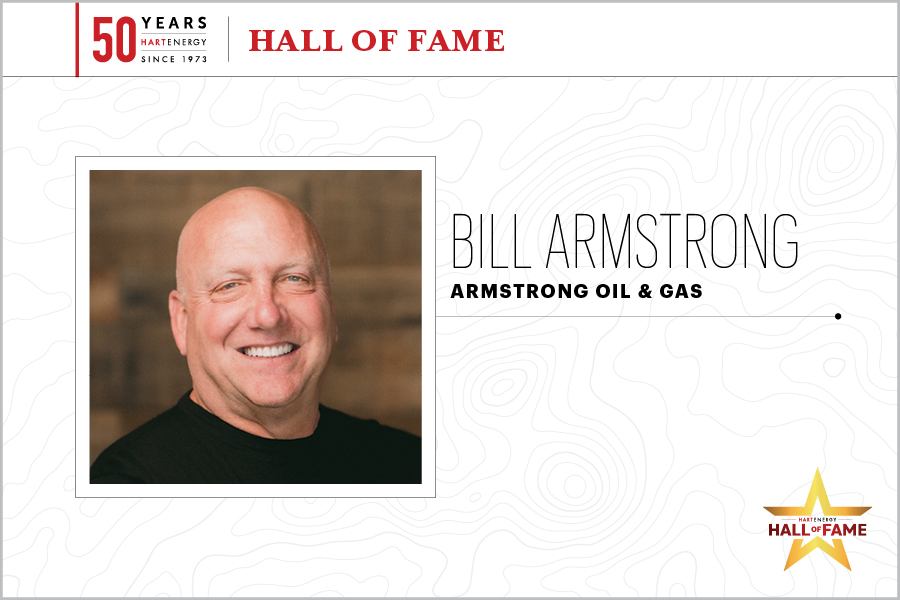Bill Armstrong
Editor's note: This profile is part of Hart Energy's 50th anniversary Hall of Fame series honoring industry pioneers of the past 50 years and the Agents of Change (ACEs) who are leading the energy sector into the future.

Growing up the son of an oilman and meeting industry legends such as T. Boone Pickens, the late Tom Brown and members of the Hunt family, dreams of becoming a wildcatter would not be farfetched.
Growing up, Bill Armstrong could not resist the wildcatter’s swashbuckler mentality and search for buried treasures, nor the technical or business sides of the oil and gas business.
“I thought to myself, even as a young boy, ‘Man, I want to be a part of that,’” said Armstrong, CEO of Denver-headquartered Armstrong Oil & Gas. “And so, it was just one of those things. I fell in love with the industry early, and I’m still in love with it.”
Conventional oil and gas exploration activity and spending may have fallen from highs seen around 2014-2015, but searches have not come to a halt. Explorers in places such as Guyana, Suriname, Mauritania and Namibia keep it in the spotlight—even as the energy transition pushes parts of the world to renewables and lower-carbon energy sources.
“I think people are finally realizing, ‘wow, we still have to provide a lot of energy for the world. And so, wildcatting is kind of coming back in vogue,” Armstrong told Hart Energy. “Technology is always changing. Our ability to find this stuff is always changing, and it’s really fabulous stuff.”
Armstrong said he is still “wildcatting like mad,” mostly in Alaska but also internationally.
The geologist founded Armstrong Oil & Gas in 1985. Wildcatting, or drilling in unexplored areas in search of oil, has always been part of the company’s business model. Eschewing popular shale, coalbed methane and gas plays, Armstrong focused on making big finds in underexplored areas. And, the company has chalked up several exploration wins, including the gigantic Pikka field on Alaska’s North Slope in 2013. The discovery, made in an area that was considered “past its prime” between two existing fields, ranked as the third-largest oil discovery in U.S. history.
Five years later, the company and its partner Repsol drilled two more wells—Horseshoe 1 and Horseshoe 1A south of the field in the Nanushuk play—solidifying its supergiant status with 1.2 billion barrels of recoverable light oil.
As a champion for exploration successes, Armstrong was named Wildcatter of the Year in 2021 by the Western Energy Alliance.
“Wildcatter is a perfect description of Bill Armstrong when you consider his discoveries in Alaska and success opening up a new frontier and renewing excitement in the state,” Kathleen Sgamma, president of the Alliance, said in a news release at the time. “But what sets Bill apart is his humble nature and big heart for helping the community.”
The Armstrong Foundation mainly focuses on education and arts philanthropy.
Armstrong said if he wasn’t involved in the energy business, he would have plenty of passions to pick from to stay busy. “I’m passionate about my family and my friends, the oil business, the wine business, philanthropy,” he said.
Asked what he considers the most challenging issue facing the industry today, Armstrong said the “overly wrought hysteria against hydrocarbons over global warming, or climate change.… The attack on the oil and gas industry is really an issue,” considering it supplies world with affordable energy.
—Velda Addison, Senior Editor, Energy Transition
